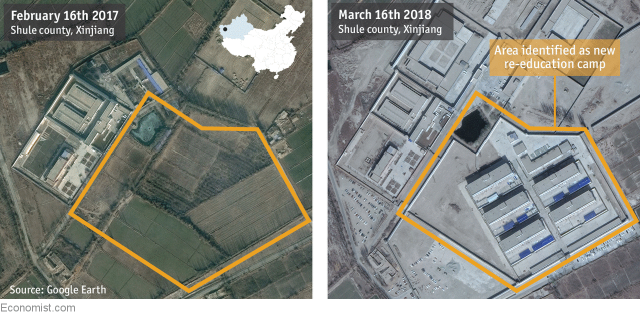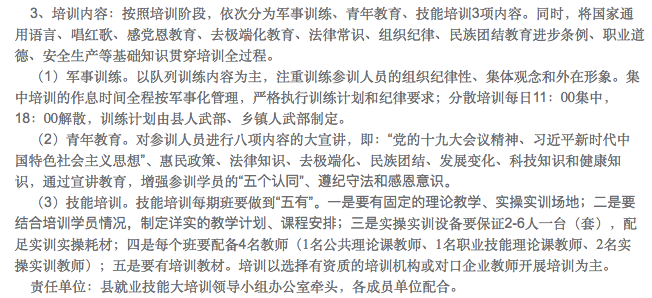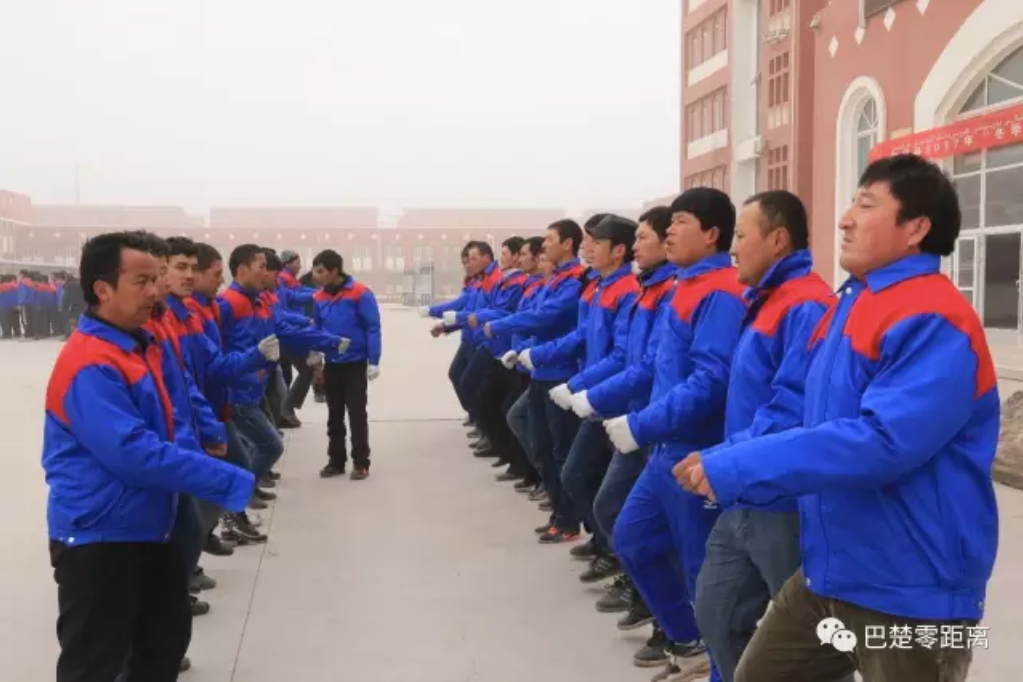Gulag Style
When we talk about Xinjiang (East Turkistan)’s re-education system, we often compare it with Soviet’s Gulag. Satellite imageries also confirm many re-education camps are heavily guarded detention facilities like Gulag or Nazi camps.

More satellite imageries:
But this kind of Gulag style camps is only one part of Xinjiang (East Turkistan)’s re-education system. Many other re-education camps doesn’t look so much like Gulag. They are reconstructed from ordinary civilian schools. Moreover, re-education system does not solely focus on physical confinement and labour work like Gulag. One major purpose of re-education is cultural and racial assimilation like Indian residential schools.
Residential School Style
In early 2018, Karshgar launched a new round of large scale, high profile re-education campaign. Government’s news tell us a lot about how Xinjiang (East Turkistan)’s re-education works.
Who are required to be re-educated?
Kargilik, a county in Karshgar prefecture, issued a detailed government document about the arrangement of this re-education campaign. It says jobless people and family members of 三类人员 should attend this re-education. 三类人员 refers to those Uyghur political prisoners.

The document emphasized “jobless people 闲散人员”, which is an extremely vague and over-inclusive term in China. Majority Uyghur population are living in rural areas. Employment is a concept only applicable to urban population. In China’s official statistics, employment rate always excludes rural population. It is impossible to tell a farmer is employed or not. In the summer, they will be occupied by farm works. But in the winter, there is little works required in the farm. Therefore, Jobless people 闲散人员 actually refers to all the rural Uyghur population.
Moreover, there are lots of news indicating labour shortage in Xinjiang (East Turkistan)’s rural areas. China is even recruiting Han Chinese farmers to work in Xinjiang (East Turkistan) farms. (https://photo.sina.cn/album_1_89251_281252.htm?ch=1&vt=4&pos=108&his=0&hd=1.)(https://twitter.com/Uyghurspeaker/status/1006776233026375682) Why is China still talking about “excessive labor” in rural Xinjiang (East Turkistan)?
One explanation is China is evacuating rural Uyghur villages. China is forcing Uyghur, especially young Uyghur, to move to cities, especially those in Northern Xinjiang (East Turkistan) and other provinces of China. One major problem for Chinese government is the lack of effective control over Xinjiang (East Turkistan)’s vast rural areas. So on one hands, China is investing in governmental institution building in rural areas. For example, China has recruited more than 0.7 million Chinese “volunteers” to Xinjiang (East Turkistan). (http://www.xinhuanet.com/2017-12/06/c_1122066775.htm). On the other hand, China is forcing Uyghur youth to move to major cities where China has well-established institutions to exert social control.
What are contents of re-education?
The above Kargilik government’s document also has a relatively detailed description of the contents of re-education:

There are three major parts: military training, political education, vocational skill training. From other sources, we can find Mandarin learning is also mandatory.
China’s military training is only a euphemism for discipline training. It mostly focuses on parade marching. Conformity and obeying orders are everything. News suggests Uyghur are required to drill more than 8 hours every day. Long hours of standing and goose stepping make it indistinguishable from corporal punishment.

In this news (https://read01.com/G0aoDE.html#.Wx4reVMvxp8), we can find lots photos of the so called military training.
How long is the re-education?
Indefinite. The basic length of re-education is 3 months. But re-education will not automatically end after 3 months. Uyghur have to meet certain requirements before they are allowed to leave. For example, they have to obtain proficiency in Mandarin. They have to pass political exams. Those failed to accomplish the requirements will be held indefinitely.
Shule (Kashgar Yengisheher) County published documents to order all Uyghur in the camps are required to continue their re-education “继续回炉培训” until they satisfied the requirements.

How many Uyghur are “re-educated”?
Some news suggest during April 10 to Jun 8, there are 250 thousands Uyghur in Kashgar region attended re-education, which is 6.9% Uyghur population (3.6 million), or 26.3% male Uyghur labor force (age 20–50, 0.95 million).







